brand new
Listen: Sincerely, Grizzly – “Us; or Optimism”

Three piece literature rock outfit, Sincerely, Grizzly from Adelaide, Australia have just released the first single titled Us; or Optimism off of their debut record “Halves”. Literature rock is a hybrid of both art and math rock, combining time signature changes and intricate guitar and percussion work. The forthcoming album “Halves” is the bands’ attempt to understand and reconcile musical, personal and philosophical dichotomies. Us; or Optimism was recorded in Melbourne with Jez Giddings at Hot House, mixed by Brad Wood (Sunny Day Real Estate, Smashing Pumpkins, Placebo) and mastered by Emily Lazar (Brand New, Death Cab For Cutie, Wu Tang).
Sincerely, Grizzly this year alone have supported the band responsible for their musical existence, …And You Will Know Us By The Trail of Dead as well as embarking on two national tours of their own and sharing the stage with artists such as JAPANDROIDS and The Presidents of The United States of America. You can stream their new single below and follow the band on Facebook for more information. They embark on a national tour of Australia tomorrow so if you’re from there check out the dates here.
Review: One Hundred Year Ocean – “Where Were You While We Were Getting High?”
One Hundred Year Ocean – “Where Were You While We Were Getting High?”
Released: July 8, 2013
Label: Broken World Media
Purchase: Digital | Pre-Order Vinyl Available Soon
One Hundred Year Ocean officially today release their new four track EP Where Were You While We Were Getting High?. Oasis fans unite! Based out of Willimantic, CT, OHYO is the solo work of Derrick Shanholtzer-Dvorak from TWIABP. The band is “usually made up of close friends and weirdos” and creates an indie rock emo sound with musical influences such as Modest Mouse, The Hold Steady, and Cursive. The EP was recorded by Chris Teti at Silver Bullet Studios in Burlington, CT and mastered by Jon Markson.
The first track on the EP titled Hospital Town, is a slower paced with a long repetitive intro leading to melancholy filled lyrics thematically about giving up. The refrain “I hope there is a hell / and I hope we don’t forget to lose it all” gives off an eerie tone with a slight glimmer of hope. Soco Amaretto Bud Light Lime, the second song, which I hope is in reference to the Brand New track, picks up the pace of the EP. Quick twinkly indie melodies and two verses containing philosophical questions and obscure nature imagery portrays the adeptness of this outfit at songwriting. The track then leads nicely into a Modest Mouse sounding instrumental bridge with a medley of synthesizer, guitar and percussion before closing out.
In Apples, the trumpet leads the start of the track with the drums and guitar following. For some reason, I just love OHYO‘s use of the trumpet in this EP it just seems to fit seamlessly. Lyrically, I really hope the band members don’t drink each other’s urine, but if that’s the secret behind these songs, then maybe more bands should be drinking each other’s piss. Despite the short length of this track, just above one minute, it’s one of the more cheery numbers with lines such “Don’t worry about the rent, this month isn’t over yet.” and “We were electric like the summer / And I said to my brother / ‘Next Halloween let’s be each other and stay that way forever'” providing a sense of optimistic realism.
The last track, Magnetic Curses is a personal favorite on the release, combining the beloved trumpet and Derrick Shanholtzer-Dvorak’s lyrical mastery. With a crescendo leading to “So where is our hope? / Or when do we get paid? /’cause I’ve been so broke” and a wail of emotion, it brought me back to that tear-jerking scene in 50/50 where Joseph Gordon-Levitt loses it in the car. This song is self-deprecating just without the humor, but it speaks to the listener and creates the mood that not many other genres can.
With more mature songwriting and a refined sound, delving into various corners of indie, emo, and pop Where Were You While We Were Getting High? is definitely worth a listen and is one of my favorite releases this year so far. Streaming now on their Bandcamp with pre-orders of a one sided 12″ available later from Broken World Media pick this album up. There is a name your price basis download here. For more information check out their Facebook and catch them on their US tour starting in August.
Standout Tracks: “Soco Amaretto Bud Light Lime”, “Magnetic Curses”
9.0
Track Listing:
1. Hospital Town
2. Soco Amaretto Bud Light Lime
3. Apples
4. Magnetic Curses
Review: Balance and Composure – Separation
Balance and Composure – Separation
Released: May 10, 2011
Label: No Sleep Records
Purchase: iTunes | Insound | Amazon
Fans of Balance and Composure have been eagerly awaiting a full length release for quite some time now. After releasing two mature EPs and arguably the better side of a split with Tigers Jaw over the last three years, Balance and Composure finally appeased fans with news of Separation, comprised of twelve tracks.
Upon first listen, however, it’s quite possible avid followers of Balance and Composure will be disappointed. Moving towards a more streamlined sound definitely contributed to a loss of “oomph” and raw emotion from the band’s music. However, this more concentrated approach does give Separation a sense of cohesiveness and focus, attributes vital to a successful album.
Separation excels most on songs where Balance and Composure’s 90’s influences are the most apparent. “Stonehands” delivers in this aspect, showcasing both emo and grunge influences, though vocalist Jon Simmons tends to sing a bit nasally especially on words with “long e” vowels. A better culmination of 90’s style and Simmons’ vocal performance is the title track. On the chorus, Simmons utilizes his perfected “sing scream”, a gritty yell, but with definitive pitch. It’s a technique Jesse Lacey of Brand New and Andy Hull of Manchester Orchestra also use, though Simmons’ style feels more passionate.
As a whole, though, Separation seems like more of a turn towards alternative rock. While Balance and Composure do perform this genre with ease and more than competently (take the southern rock vibe of “Galena” or grit and angst of “I Tore You Apart In My Head” for instance), at times the record leans toward typicality, most notably on “Void”, an unfortunate pick for an album opener.
The loss of emotional immediacy might be due in part to the album’s generally flat production. Producer Brian McTernan’s past work has been inconsistent, dipping especially on Emarosa‘s latest self-titled release. WhileSeparation is definitely an improvement for McTernan, the drums sound tinny and lack tone and it’s nearly impossible to tell the band has three guitarists. The production just doesn’t feel as dynamic or raw as a band like Balance and Composure, one who thrives on straddling the crossroads of technicality and passion, needs to fully excel.
However, after multiple listens, Balance and Composure’s passion permeates McTernan’s iffy producing job. Tracks like album standout “Patience” exude intense feeling in the music. Balance and Composure mean every lyric, every guitar strum, every bass line, and every snare hit. Though perhaps Separation only fully demonstrates this with the listener’s patience (yes, I went there), the album isn’t a regression from past work. Balance and Composure is still miles ahead of most other bands operating in their genre. The reason?
Authenticity.
7.7
Standout Tracks: “Patience”, “Galena”, and “I Tore You Apart In My Head”
12 Good Looking Album Artworks (Post-2000)
Album artwork made its first appearance in 1938, when Alex Steinweiss introduced artwork over the previously, plainly labeled covers. This “invention” provided every album with its own unique identity and images that fans could associate their music with. When we think of an album, the first thing that often comes to mind is the cover; it’s become a peripheral of music that no album, EP, or single can do without, remaining with us even in the digital format.
The following twelve album artworks are not ranked in any particular order.
Fall Out Boy – Infinity On High
The flying sheep and dream-like atmosphere are this cover’s best features. The artwork has depth and gives you plenty to look at, especially the various contrasts that coexist (moon/wall and crow/wall with light and dark values, closet interior/wall with temperature values). The artwork just has a unique dream feel.
Brand New – Deja Entendu
I have no idea why the astronaut is there, but this cover just looks, to put it simply, cool. Contrasting temperatures result in an odd feel that absolutely fits Brand New’s distinct rock sound. This feel is further expressed by the textures of the water and sky.
Death Cab For Cutie – Narrow Stairs
No stairs here to reflect the album title, but the cover looks fantastic nonetheless. The multi-hued red, green and blue colored strips of paper being layered have great visual texture and the fact that no two strips share the same tone (more or less) gives this cover a lot of interest.
Radiohead – In Rainbows
This pop art styled cover designed by Stanley Donwood, who has done every Radiohead artwork since 1994, looks like something created digitally when in fact it (surprisingly) isn’t. It features a galaxy photograph layered with paint and interesting type that looks simple and fits Radiohead’s style of experimental music. The variety of color also serves to reflect the album title itself.
MGMT – Congratulations
‘Psychedelic’ just about sums up this cover. Odd colors, an i-don’t-know-what’s-going-on scene, and the cartoony style makes the cover seem like it’s something you’d see in a weird dream or trip (drugs are bad for you, kids).
Jay-Z – The Blueprint 3
Clean cover, with something other than the generic rapper’s face or body photograph. From a distance, the red bars have strong dominance and clearly indicate the cover is of the 3rd installation of Jay-Z’s ‘Blueprint’ records. Closer up you notice the objects piled up which adds complexity and depth.
Delphic – Acolyte
The artwork is absolutely amazing. Great photo-manipulation of the band members and the smoke they fade into. It’s something you definitely won’t mind looking at on your ipod.The background may be a tad simple when the complex photomanip is placed on top, but the Delphic typeface works to ease the combination.
Jimmy Eat World – Chase This Light
Beautiful photograph with vibrant colors, giving insight to what the music itself is like. Nothing really much to say, just a wonderful looking cover.
The Killers – Hot Fuss
Smoooth. A soft blue dominates the cover (plus hints of red), and gives off a fuzzy, mellow feel. The Killers’ logo typeface fits well too, although I’m not sure I can say the same for the buildings lining the bottom…
Kanye West – Graduation
The cartoon style of this artwork by Takashi Murakami is great and the colors are extremely eye-catching. The illustration features West in a teddy-bear form (known as “Dropout Bear”, referencing an earlier record) being shot out of a colorful, vectorized who-knows-what. This is one creative rap album cover that sets it apart from nearly every other.
Passion Pit – Manners
Green paint, white text. What else do you really need?
Pendulum – Immersion
The feel of this cover is great. This artwork by Polish artist Valp is mysterious and just seems to fit the sound of Immersion. The colors are great, using a majority of cool green and blue while adding hints of warmer purple and red to increase interest. There is just so much going on here that some may not notice all the subtle elements of the art from a quick glance or from their music player screens.
Review: Bright Eyes – The People’s Key
Bright Eyes – The People’s Key
Released: February 15, 2011
Label: Saddle Creek Records
Purchase: iTunes | Insound | Amazon
In the first single from The People’s Key, “Shell Games”, frontman Conor Oberst reflects on his career, referencing the covers of his past few albums and suggesting that fame is a “heavy love.” Such nostalgia should be no surprise, as this will be his seventh and final album as Bright Eyes. Even though this is the only song that lyrically reaches back to his past, it is clear that he had the past on his mind through much of the writing process of this album, taking much from his back catalog musically. Bright Eyes fans may like the prospect, but in reality, it turns out to be one of the album’s significant weaknesses.
As Oberst is wont to do, he opens with a strange monologue, this time a person explaining his vision of life’s origins. This appropriately sets the tone for the album’s major motif: an exploration of different schools of religious thought. When a lonely electric guitar emerges from the speech, listeners are exposed to a darker Bright Eyes, one evocative of Brand New. The song continues to build, adding instruments at effective times, eventually climaxing into its epic end. After a couple of weaker side projects, Oberst is back to form… for a while.
“Shell Games” starts with a familiar Bright Eyes chord progression (think “Clairaudients”), but soon kicks into an odd synth number evocative of Digital Ash in a Digital Urn. Widely regarded as one of Oberst’s weaker efforts, this is perhaps not one of the better sources from which to draw inspiration, but Key does so quite often. The song’s structure and lyrics mostly raise it up above the weaker music, but unfortunately, other songs aren’t so lucky.
“Approximate Sunlight” is one such song. While some may applaud the song’s experimentation, it is very difficult to listen to. The vocals have a hollow echo, which is frustratingly used on nearly half of Key’s songs, and the chorus is mildly cringe-inducing. There are some decent atmospheric guitars, but they are drowned out by excessive production. The lyrics don’t warrant the dark ambience, and there’s no real payoff to the song.
“A Machine Spiritual (The People’s Key)” is a better use of the digital sound, complementing the general feeling of the moderately vague lyrics. Despite going digitally overboard for one repetition of the main theme, the song’s structure and catchy chorus helps it overcome the overproduction. “Triple Spiral” also manages a nice balance between the new and old sounds, making it one of the better songs on the album.
“Haile Selassie” draws musical inspiration from another well: Oberst’s solo material. Sounding very much like a B-side from his self-titled album, it has a fun, bouncy air, but can’t sustain itself for its full length. “Jejune Stars” is similarly upbeat and actually reminiscent of label-mates Cursive. The playful guitars blend well with the lyrics, making it a simple, pleasant song.
While The People’s Key’s lyrics are not bad, it doesn’t feel as if Oberst is trying as hard this time around. Bright Eyes always drew such strength from very simple, very relatable lyrics (e.g. “I’m leaving this place, and there’s nothing I’m planning to take, just you… just you”). On The People’s Key, however, they’re much more vague and the references more obscure. Lines like “Now you are how you were when you were real,” may make sense in context (key word may), but they lack the simple intimacy of previous material, partly because of the album’s themes. Oberst isn’t making observations about life, but general statements relating to different religions, which are much harder to connect to.
The one song that breaks this mold, both musically and lyrically, is the beautiful “Ladder Song,” which is actually one of the strongest tracks that Oberst has put to record. A touching piano complements Oberst waxing poetic about death: “You are not alone in anything. You are not unique in dying.” A late song, it is a welcome respite from some of the album’s weaknesses and highlights exactly what The People’s Key is otherwise missing.
It may be harsh to say that The People’s Key is a disappointment, but it’s hard to deny that there is room for improvement. After the brilliance of Cassadaga, Bright Eyes reverted to a sound that wasn’t widely welcomed the first time around. It isn’t omnipresent like in Digital Ash, but the digital specter rising from those ashes haunts too many songs in either the vocals or music. Although not without its strong points, The People’s Keywon’t be the one that Bright Eyes is remembered for.
7.2
Standout Tracks: “Firewall”, “Triple Spiral”, “Ladder Song”
Review: Heinali and Matt Finney – Lemonade EP
Heinali and Matt Finney – Lemonade EP
Released: June 15, 2010
Label: Self-released
Purchase: iTunes | Amazon
Ukrainian composer Heinali and American spoken-word poet Matt Finney may live on opposite ends of the world, but it is virtually impossible to tell. When the two combine on their second collaboration Lemonade, the miles and miles separating the two artists is undetectable, resulting in one of the darkest and most depressing records of the year.
The nine track EP couples dark, droning ambience by composer Heinali with ominous, angsty lines from Matt Finney, ultimately creating a troubling, yet intriguing piece of art. From the very start of the album, Heinali and Matt Finney engulf the listener and never let go, taking them on a whirlwind emotional journey into the lives of both musicians. Matt’s voice, low and raspy (think Christian Bale’s Batman mixed with Brand New’s Jesse Lacey), blends perfectly with the tug and pull of Heinali’s backing instrumentals.
Lemonade, as a whole, seems more fit for a movie soundtrack than a standalone record. Ultimately, the intertwining sounds of Lemonade are intriguing but are all too similar to work effectively together, resulting in a rather cinematic effect. For the most part, Lemonade is a holistic affair, with the overall vibe of the record generally more appealing than that of each individual part.
One of the best examples is sixth track “The Dream”, which seems to stick out because it is stylistically different from the rest, with Heinali focusing on a somber piano line and some somewhat uplifting orchestral sounds. Over top, Matt Finney croaks, “The ones I claimed to be heroes ended up being drunks or addicts/ Ended up putting guns in their mouths or tying ropes around their necks so I built walls instead.” Powerful? Indeed.
For some reason, the eccentric composition of Heinali and the melancholic lines from Matt Finney just seems to click. The last three tracks of the EP feature solo performances and highlight the fact that the two artists are definitely better when working together. It is the combination of the two – a rather unexpected, but gladly welcomed combination to say the least – that results in the true brilliance of Lemonade.
Download Lemonade on their Bandcamp at a pay-what-you-want rate.
6.5
Standout Tracks: “Lemonade” and “The Dream”
Review: Bad Books – Bad Books
Bad Books – Bad Books
Released: October 19, 2010
Label: Favorite Gentlemen
Purchase: iTunes | Insound | Amazon
Bad books are bad. Bad trolls are bad. Bad Books is good, but just not good enough. Kevin Devine and Manchester Orchestra, both rising to prominence in the indie rock scene, combined with the blessing of Brand New’s frontman Jesse Lacey, compose Bad Books. The highly anticipated brilliance of this combination (the idea certainly is very appealing on paper) ultimately fails to manifest itself on Bad Books’s self-titled release. A supergroup in a rather superficial sense of the word, Bad Books is more of a Kevin Devine–Manchester Orchestra split EP than an amalgamation of the two.
Opener “How This All Ends” is a perfect example of this idea. As a Manchester Orchestra track, the opener is solid, bringing the emotional intensity and pop-infused hook that the band has been lauded for. But where is Kevin Devine? What makes this a Bad Books song and not a Manchester Orchestra song? For the most part, this is the main fault of the record; very little of the album demonstrates that it is in fact a collaborative side project rather than a split EP.
This doesn’t hold true for all of the record, luckily. First single “You Wouldn’t Have To Ask”, although a mere 1 minutes and 52 seconds, superbly blends the voices of Kevin Devine and Andy Hull with forceful and lively instrumentals from the Manchester Orchestra crew. The hook is unabashedly catchy, providing a rather ephemeral glimpse at just how good a true Bad Books album could be. This single, sadly, is misrepresentative of the entire record, with the record lulling back into the rather dull (but still impassioned!) acoustic Andy Hull track “I Begged You Everything”.
Although the record is an overall enjoyable listen, the album fails to entice like a Manchester Orchestra record or a Kevin Devine solo album. This, ultimately, is a huge disappointment, as the talents of the two sides of the “supergroup” seem to have been put to waste, creating a rather mediocre album. When the band does shine however (make sure you listen to “You Wouldn’t Have To Ask”), the results are incredible, but the record fails to impress as a whole, bringing passable melodies that fail to manifest into something that is ultimately different.
Download “You Wouldn’t Have To Ask” from the group’s label Favorite Gentlemen here.
6.8
Standout Tracks: “You Wouldn’t Have To Ask” and “Baby Shoes”

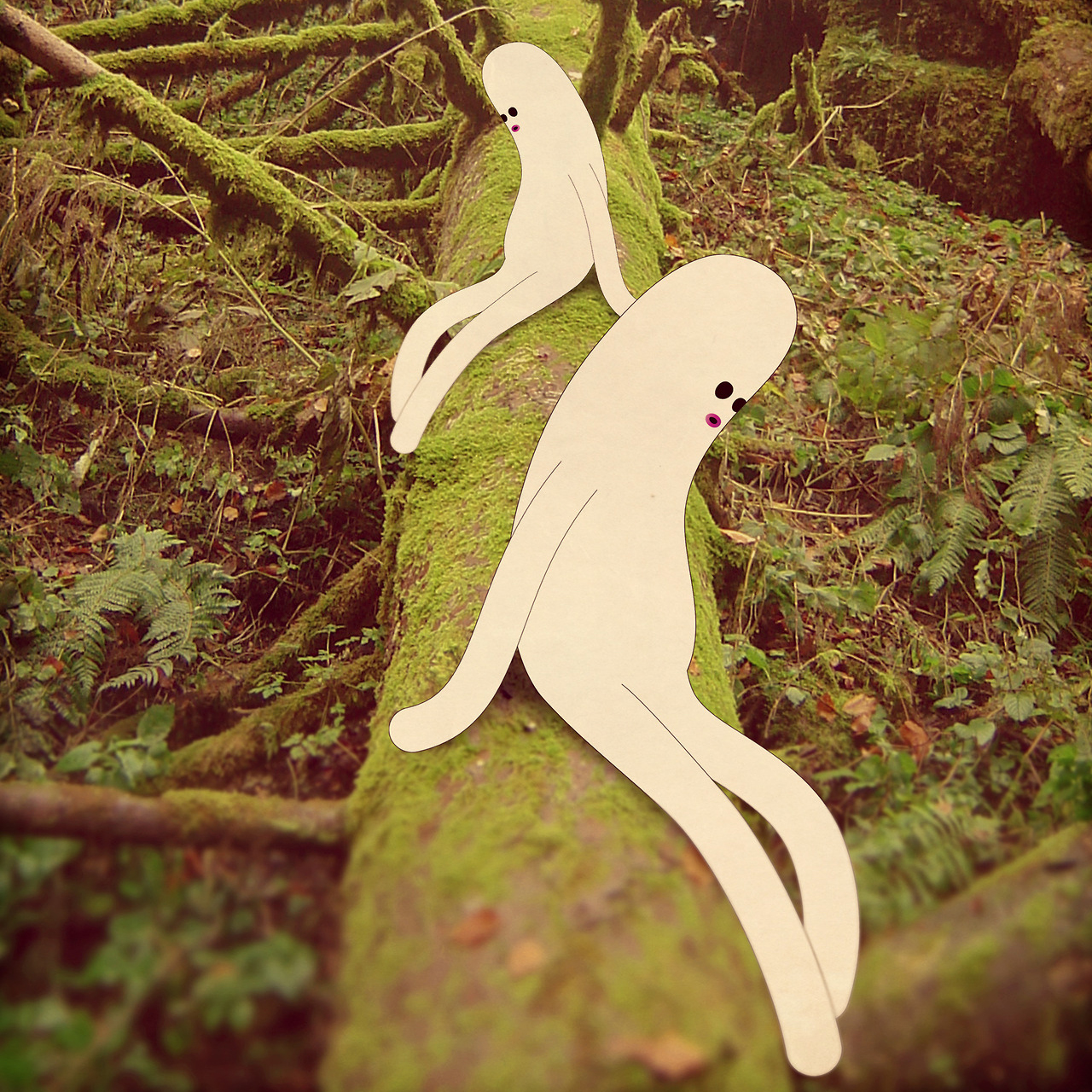

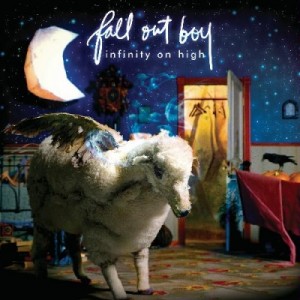
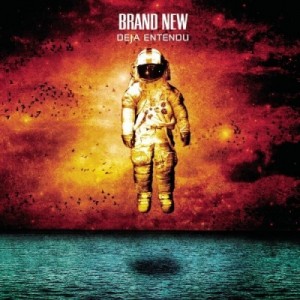
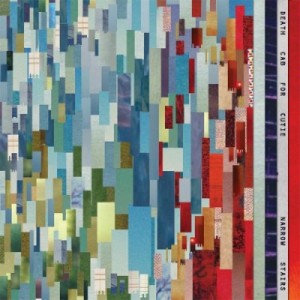
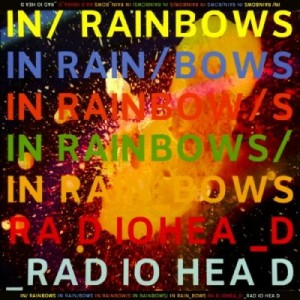
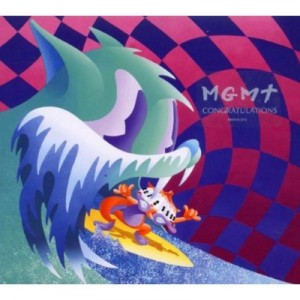
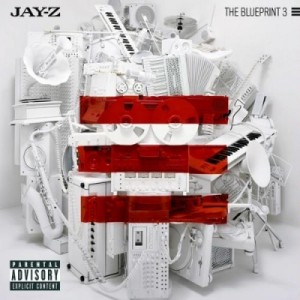
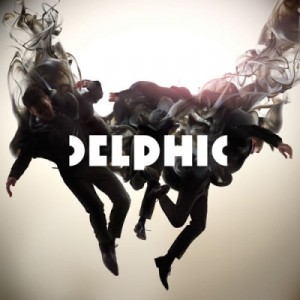


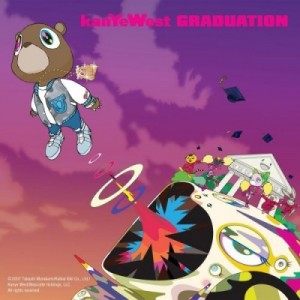
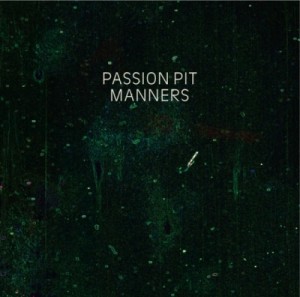



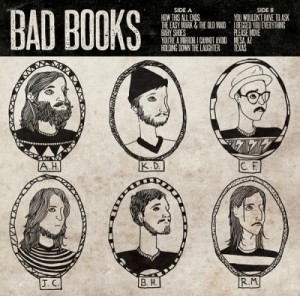
Connect